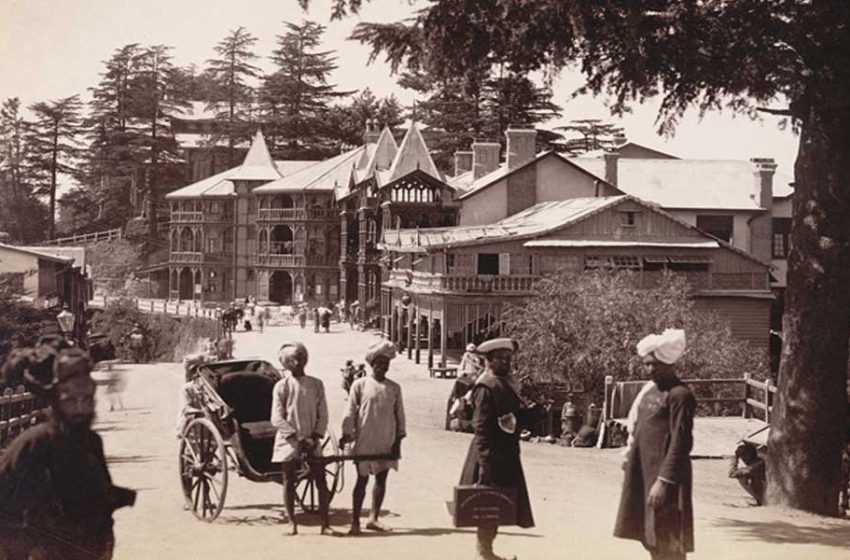Shadows of Empire: The British Raj in Himachal Pradesh

In the rugged terrain of northern India lies a region steeped in history, where the echoes of a bygone era still resonate amidst the towering Himalayan peaks. Himachal Pradesh, known for its breathtaking landscapes and vibrant culture, holds within its folds the remnants of one of the most significant chapters in Indian history: the era of the British Raj.
Unveiling History: The British Raj in Himachal Pradesh
The British Raj, the colonial rule of the British Empire in the Indian subcontinent from 1858 to 1947, left an indelible mark on the socio-cultural fabric of India. Himachal Pradesh, with its strategic location and natural beauty, became a focal point for the British administration, serving as a summer retreat from the scorching heat of the Indian plains.
The Hill Stations: Retreats of the Raj
One of the enduring legacies of the British Raj in Himachal Pradesh is the establishment of hill stations, which served as administrative centers and retreats for British officials and soldiers. Shimla, referred to “Queen of Hill Stations,” emerged as the summer capital of British India. Its cool climate and picturesque surroundings made it a preferred destination for the colonial elite. The iconic Viceregal Lodge, now known as the Indian Institute of Advanced Study, stands as a testament to the colonial architecture and grandeur of that era.
Other hill stations like Dalhousie, Kasauli, and Dharamshala also flourished under British patronage, each retaining traces of its colonial past in the form of quaint churches, bungalows, and schools.
Infrastructure and Development
The British Raj brought significant infrastructural development to Himachal Pradesh, laying the groundwork for modern transportation and communication networks. The construction of railways, roads, and bridges facilitated easier access to remote areas, opening them up for trade and tourism. The Kalka-Shimla Railway, a UNESCO World Heritage Site, stands as a remarkable engineering feat, showcasing the ingenuity of British engineers.
In addition to physical infrastructure, the British also introduced modern systems of governance, education, and healthcare, which laid the foundation for the state’s progress in the years to come.
Economic Exploitation and Social Impact
However, the legacy of the British Raj in Himachal Pradesh is not without its controversies. Moreover, the colonial administration exploited the region’s natural resources, particularly timber and minerals, leading to environmental degradation and socio-economic disparities. Additionally, this exploitation resulted in significant ramifications for the local communities. Furthermore, the adverse effects of colonial resource extraction are still evident today. Consequently, the scars left by this exploitation continue to shape the socio-economic landscape of the region. Moreover, the environmental degradation caused by colonial policies has had long-lasting repercussions.
Additionally, the socio-economic disparities created by resource exploitation persist to this day. Furthermore, the inequities perpetuated by colonial policies have contributed to social unrest and tensions.Indigenous communities were displaced from their lands, and traditional livelihoods were disrupted, leading to resentment and unrest among the local populace.
Cultural Exchange and Influence
Despite the challenges and injustices of colonial rule, the British Raj also facilitated cultural exchange and interaction between the Indian and British societies. The blending of Indian and Western influences is evident in the region’s architecture, cuisine, and festivals. The legacy of the British Raj continues to shape the cultural landscape of Himachal Pradesh, serving as a reminder of a shared history and heritage.
Legacy and Heritage Tourism
Today, the remnants of the British Raj in Himachal Pradesh attract tourists from around the world, eager to explore the region’s colonial past. Heritage trails, guided tours, and museum exhibitions offer visitors a glimpse into the lives of the colonial administrators and the communities they influenced. The preservation of colonial-era buildings and monuments serves as a living tribute to the region’s history and heritage.
Conclusion
The shadows of the British Raj still linger in the misty valleys and snow-capped peaks of Himachal Pradesh, evoking memories of a chapter in history that continues to shape the present. Moreover, while the legacy of colonialism is fraught with complexities and contradictions, it is imperative to acknowledge and preserve this heritage for future generations. Furthermore, through responsible tourism and cultural exchange, we can honor the past while forging a path towards a more inclusive and equitable future. Additionally, as visitors traverse the winding roads and verdant landscapes of Himachal Pradesh, they are invited to reflect on the enduring legacy of the British Raj and the stories etched into the fabric of this enchanting land.
As visitors traverse the winding roads and verdant landscapes of Himachal Pradesh, they are invited to reflect on the enduring legacy of the British Raj and the stories etched into the fabric of this enchanting land.
For More Articles Click

